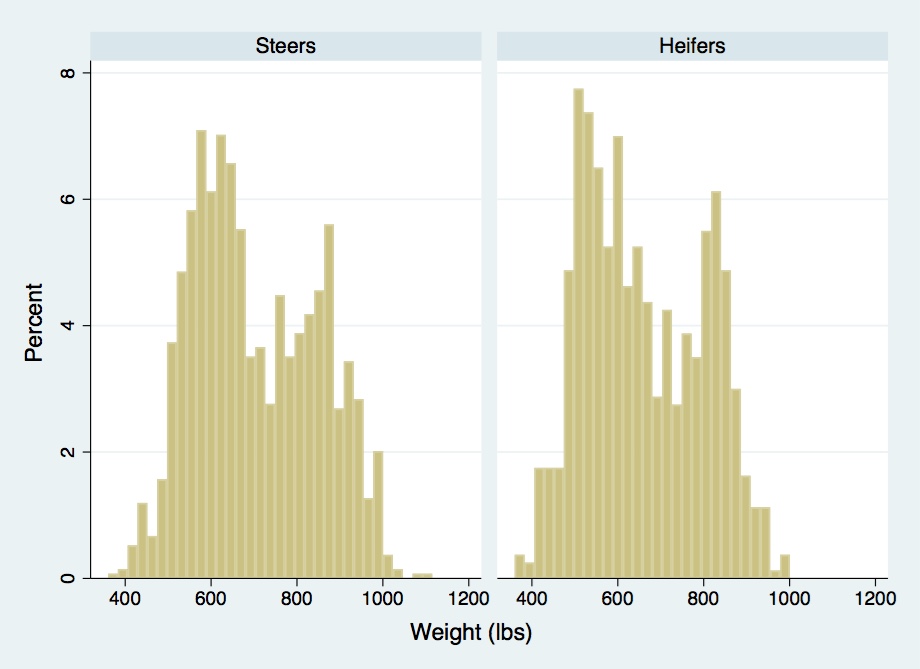By Tina Saitone
Cooperative Extension Specialist, Livestock and Rangeland Economics
The ever-expanding suite of value-added management and marketing programs available to cattle ranchers today creates substantial ranch-level complexity. Cattlemen are faced with the challenge of determining which programs will differentiate their cattle on sale day while maximizing the profitability of their operations. Although all of these programs are likely to add costs, the additional income generated from each of these programs is uncertain. Given that lots of cattle sold typically participate in many programs and management decisions must be made months or years in advance of a sale, it is nearly impossible for a rancher to accurately forecast the premium associated with implementing any particular program. However, with the help of good data from Western Video Market (WVM) Auction and modern statistical methods we can gain considerable insights into the value associated with particular programs and management practices.
In this series of blogs, I discuss estimates of the average premiums paid by buyers for individual value-added management, marketing, and vaccination programs using data from WVM's satellite video auctions in 2017. These results can give ranchers information about the average value that each of these programs brings on sale day. This blog series builds on an article in California Cattleman Magazine (May 2018).
WVM serves as a marketing outlet for cattle ranchers in the western United States. In 2017, more than 286,000 head were sold during 13 video-based auctions. Prices for calves and yearlings were analyzed separately. The graph below shows the distribution of lot-level average weight for steers and heifers sold in 2017. Calves were classified based on the average weight of the lot being between 450 and 650 lbs. in order to focus on price effects at time of weaning. Yearling lots had average weights in the 750- to 950- lb. range. In total, 998 lots of calves and 715 lots of yearlings were analyzed. Lots consisting of cows, pairs, and bred heifers were not included in the analysis.

Lot-level characteristics (e.g., breed, sex, weight, frame score, etc.) are included in the model to control for how these factors influence price, while catalog descriptions were used to determine the value-added by specific management and marketing programs associated with each lot of cattle in the auction. Using statistical techniques and this lot-level sales information, the price paid for lots of cattle in 2017 can be decomposed by each characteristic/attribute.
In order to consider management choices and market conditions in a more comprehensive fashion, every other week I will add a new blog post to this series. Please check back regularly.
If you would like to be notified via email when additional blog posts become available, please email Tina Saitone.
